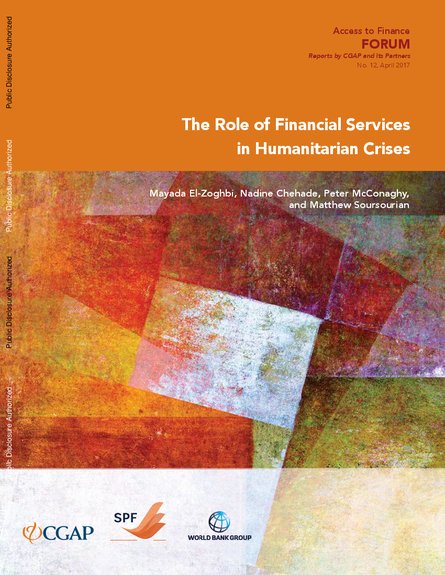
Humanitarian crises pose a formidable development challenge. Whether caused by conflict, natural disaster, climate-related events, or some combination of the three, crises have been steadily increasing in frequency, severity, and complexity. While the nature and incidences of these crises vary significantly, they affect millions of people, particularly the most vulnerable. Some populations are displaced from their communities or countries as a result of crises; others stay where they are, by choice or necessity, and must navigate unpredictable and dangerous environments. Forced displacement is becoming more common and more protracted. In December 2015, The majority remains within their country (IDMC 2016). In this context, this paper seeks to enhance the knowledge of policy makers and donors on the role of financial services mitigating humanitarian crises by synthesizing existing empirical evidence as well as operational lessons from programmatic evaluations. Where evidence is strong enough, the paper recommends actions that policy makers and donors can take to improve the provision of financial services to crisis-affected populations. The paper also identifies future research and policy priorities. The proposals outlined in this paper, which was funded by the State and Peace-Building Fund within the World Bank Group, directly supports our broader objective of promoting diversified, efficient, and inclusive financial systems at the global and country levels. Continued collaboration across sectors, institutions, and borders is the only way that the global development community will be able to address the immense challenge of forced displacement in a sustainable manner. The detailed analysis in this paper will provide invaluable guidance to the World Bank Group’s country operations as well as to our development partners.